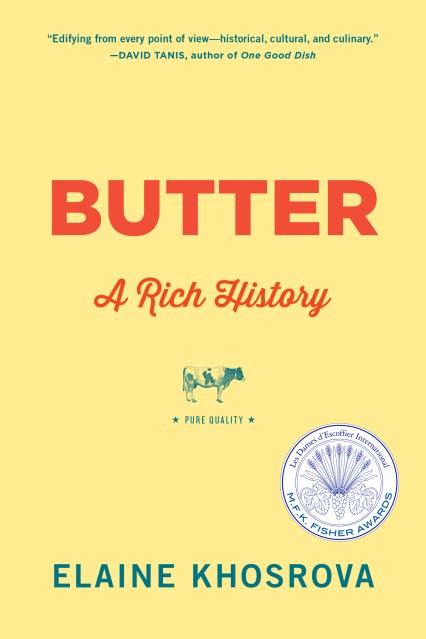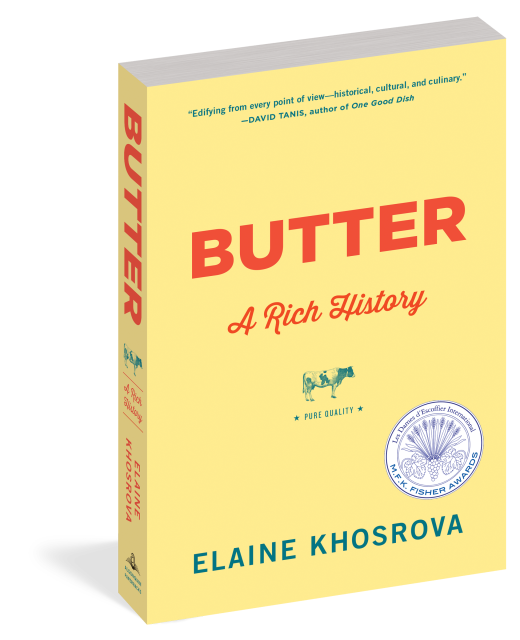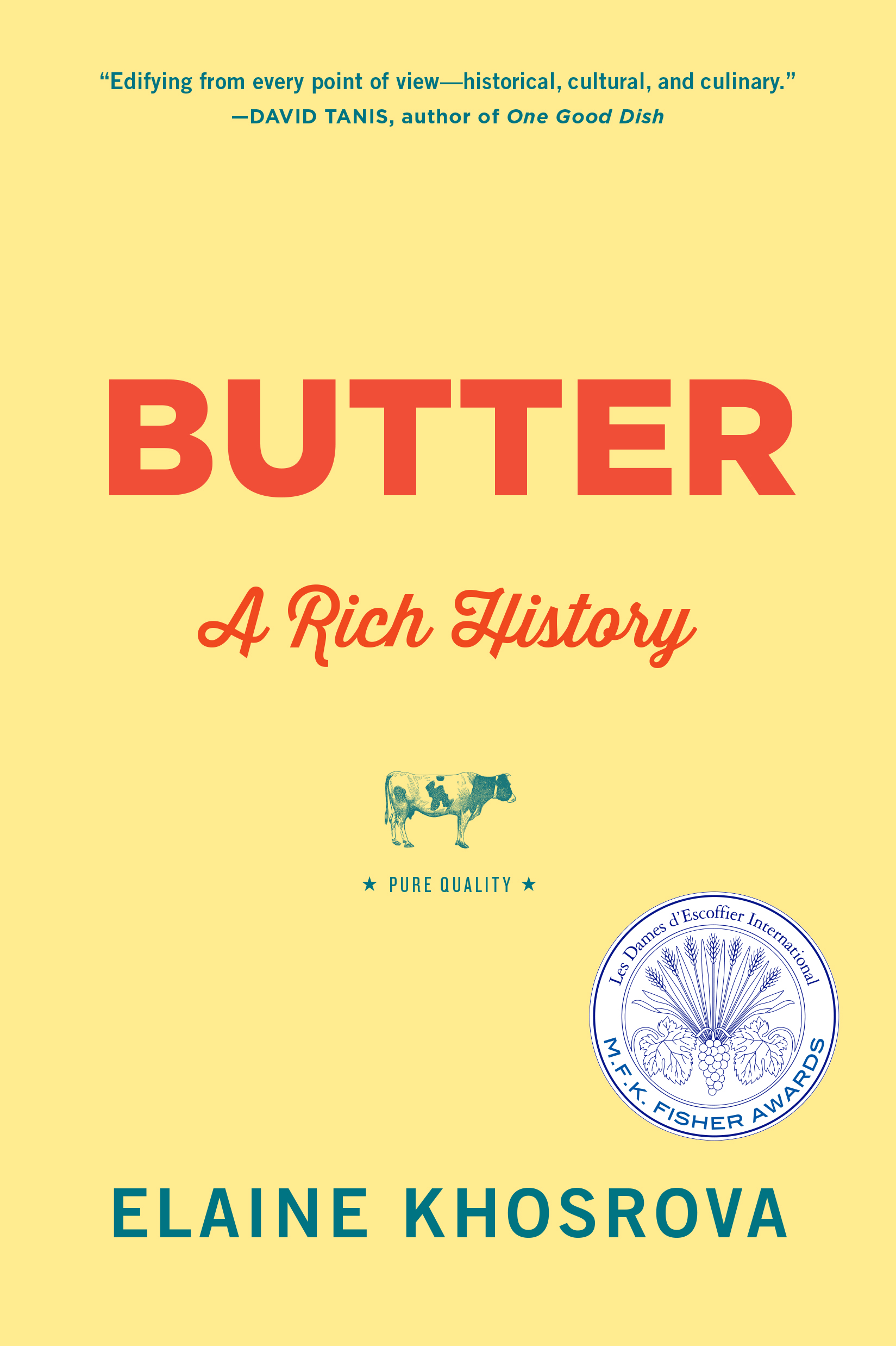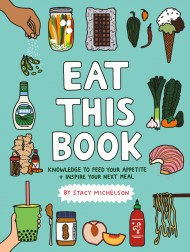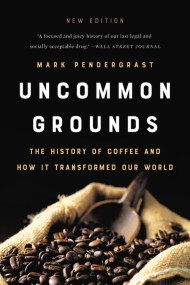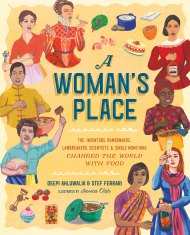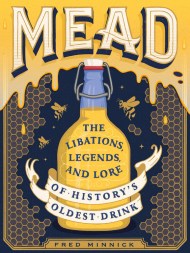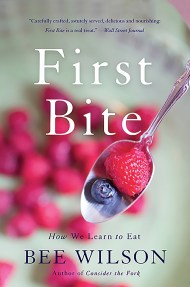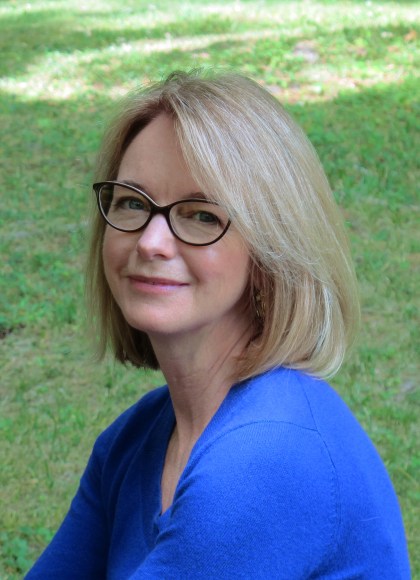Promotion
Use code MOM24 for 20% off site wide + free shipping over $45
Butter
A Rich History
Contributors
Formats and Prices
Price
$16.99Price
$22.99 CADFormat
Format:
- Trade Paperback $16.99 $22.99 CAD
- ebook $11.99
This item is a preorder. Your payment method will be charged immediately, and the product is expected to ship on or around October 17, 2017. This date is subject to change due to shipping delays beyond our control.
Also available from:
“Edifying from every point of view–historical, cultural, and culinary.” —David Tanis, author of A Platter of Figs and Other RecipesIt’s a culinary catalyst, an agent of change, a gastronomic rock star. Ubiquitous in the world’s most fabulous cuisines, butter is boss. Here, it finally gets its due.
After traveling across three continents to stalk the modern story of butter, award-winning food writer and former pastry chef Elaine Khosrova serves up a story as rich, textured, and culturally relevant as butter itself.From its humble agrarian origins to its present-day artisanal glory, butter has a fascinating story to tell, and Khosrova is the perfect person to tell it. With tales about the ancient butter bogs of Ireland, the pleasure dairies of France, and the sacred butter sculptures of Tibet, Khosrova details butter’s role in history, politics, economics, nutrition, and even spirituality and art. Readers will also find the essential collection of core butter recipes, including beurre manié, croissants, pâte brisée, and the only buttercream frosting anyone will ever need, as well as practical how-tos for making various types of butter at home–or shopping for the best.
“A fascinating, tasty read . . . And what a bonus to have a collection of essential classic butter recipes included.” —David Tanis, author of A Platter of Figs and Other Recipes
“Following the path blazed by Margaret Visser in Much Depends on Dinner, Elaine Khosrova makes much of butter and the ruminants whose milk man churns. You will revel in dairy physics. And you may never eat margarine again.” —John T. Edge, author of The Potlikker Papers: A Food History of the Modern South
“Butter proves that close study can reveal rich history, lore, and practical information. All that and charm too.” —Mimi Sheraton, author of 1,000 Foods to Eat Before You Die
“Irresistible and fascinating . . . This is one of those definitive books on a subject that every cook should have.” —Elisabeth Prueitt, co-owner of Tartine Bakery
“The history of one of the most delectable ingredients throughout our many cultures and geography over time is wonderfully churned and emulsified in Khosrova’s Butter . . . Delightful storytelling.” —Elizabeth Falkner, author of Demolition Desserts: Recipes from Citizen Cake
Genre:
-
“Khosrova takes readers on an amazing journey in the history of butter, tracing butter’s creation through time and geography . . . An ambitious and interesting look at one of the world’s most beloved dairy products.” —Booklist
“Khosrova takes readers through the fascinating story of what was once a humble food, now celebrated by chefs and home cooks alike for its ability to elevate any dish. Plenty of history and science, but she doesn’t skimp on the recipes either.” —Lexington Herald-Leader
“You will believe in butter by the time you finish this educational and entertaining book.” —Birmingham Magazine
“Khosrova’s ambitious project is a successful, fascinating account of a common dairy product.” —Publishers Weekly
“This enjoyable work packs plenty of fascinating history and science. For fans of food histories such as Dan Koeppel’s Banana or Reaktion Books’s 'Edible' series.” —Library Journal
“A tasty chronicle of the indispensable dairy product . . . Khosrova’s richly textured history melts in your mouth.” —BookPage
“A fascinating, tasty read . . . And what a bonus to have a collection of essential classic butter recipes included.” —David Tanis, author of A Platter of Figs and Other Recipes
“Following the path blazed by Margaret Visser in Much Depends on Dinner, Elaine Khosrova makes much of butter and the ruminants whose milk man churns. You will revel in dairy physics. And you may never eat margarine again.” —John T. Edge, author of The Potlikker Papers: A Food History of the Modern South
“Butter proves that close study can reveal rich history, lore, and practical information. All that and charm too.” —Mimi Sheraton, author of 1,000 Foods to Eat Before You Die
“Irresistible and fascinating. As a pastry chef, I am elbow-deep in butter every day; it is in nearly every pastry, cake, and cookie, and slathered on our toasted bread, yet reading this I realize how much history there is behind this ingredient that we take for granted. For the history, use around the world, and modern recipes and techniques (smoked butter!) this is one of those definitive books on a subject that every cook should have." —Liz Prueitt, Tartine Bakery
"The history of one of the most delectable ingredients throughout our many cultures and geography over time is wonderfully churned and emulsified in Elaine Khosrova’s ‘Butter’. I don’t think it gets much better than the smell and taste of browned butter and lemon juice as a sauce for a pan seared fish or butternut squash ravioli with sage. Or a buttery and flaky croissant wafting it’s seduction straight to your nose. Or a cold smear of butter on a baguette with a few sliced radishes and some caviar. Or chicken makhani (similar to tikka masala) with it’s spiced ghee tomato sauce! I’ve experienced a few butter tastings over years and after reading this book, ran out and bought several imported and domestic butters to compare again. Delightful storytelling around this beautiful treasure we call butter.” —Elizabeth Falkner, author of Demolition Desserts
- On Sale
- Oct 17, 2017
- Page Count
- 368 pages
- Publisher
- Algonquin Books
- ISBN-13
- 9781616207397
Newsletter Signup
By clicking ‘Sign Up,’ I acknowledge that I have read and agree to Hachette Book Group’s Privacy Policy and Terms of Use
